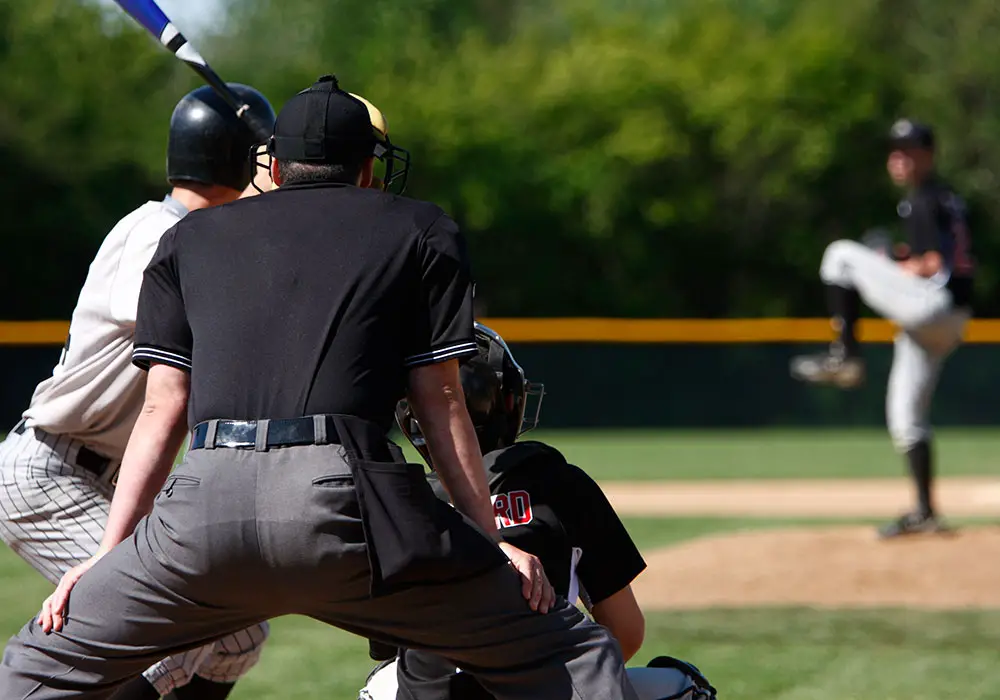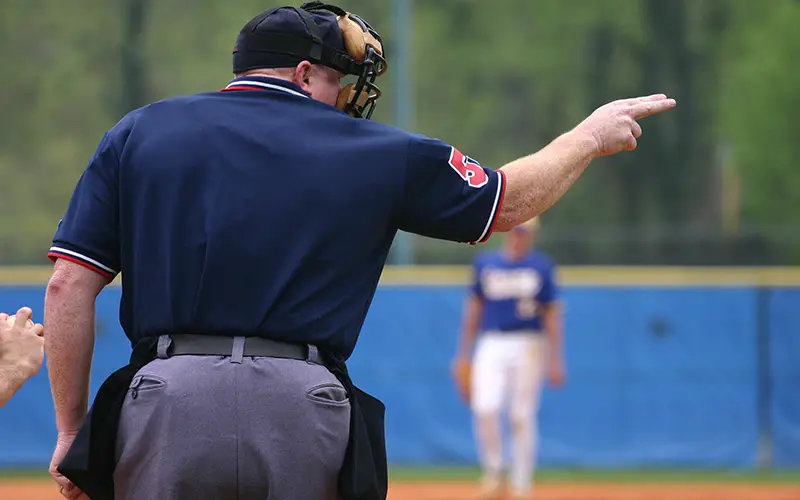How Long Does a Baseball Game Usually Last?
Baseball is a beloved sport with a rich history and a strong presence in American culture. One aspect that tends to pique curiosity among fans and newcomers alike is the duration of a typical baseball game. With varying factors at play such as innings, weather, and the pace of the game itself, it’s worth understanding how long a baseball game usually lasts.
Major League Baseball (MLB) games consist of nine innings and take an average of a little over three hours to complete. However, this average can vary depending on factors like tied games, extra innings, and the pace of play. In the 2022 season, the average nine-inning MLB game lasted three hours and six minutes.
While MLB games might be the most recognized, it’s essential to know that minor league and collegiate baseball also share nine innings as their standard, with duration generally being around the same range.
Basic Structure of a Baseball Game
Innings and Their Components
An inning in a baseball game consists of two halves, with each half featuring one team on offense and the other on defense. Both teams get an opportunity to bat and score runs in their respective halves. In an official baseball game, there are nine innings played in total. Each half-inning concludes after the defense records three outs, totaling to six outs per inning.
During a half-inning, the team on offense sends nine players, in a predetermined order, to bat against the pitcher from the opposing team. Each batter continues to hit until they reach base, are struck out, or cause another player to be out. Once three outs are recorded, the half-inning ends, and the teams switch roles. The game progresses this way through all nine innings.

Home and Away Teams
In baseball, the two competing teams are classified as the home team and the away team. The home team is the one hosting the game at their home stadium, while the away team is the visiting side. This distinction has implications on the game’s structure and order of play.
Typically, the away team takes its turn on offense first, batting in the top half of each inning. The home team then follows by playing offense in the bottom half of the inning. This arrangement allows the home team the advantage of always having the final opportunity to score runs in the game, as they bat last in each inning.
By understanding the basic structure of a baseball game, including the innings and their components, as well as the roles of home and away teams, spectators can appreciate the intricacies and strategy involved in this popular sport.
Factors Affecting Game Length
Pitch Clock and Timer
One of the main factors affecting the length of a baseball game is the implementation of a pitch clock. The pitch clock is a timer that limits the time a pitcher has to deliver the next pitch. This has been introduced in an effort to speed up the pace of play and reduce the overall game time. In Major League Baseball (MLB), for example, pitchers are given 20 seconds to throw the next pitch. This can have a significant impact on the game’s duration, as reducing the time between pitches can lead to fewer delays and a quicker overall game.
Pitching Changes
Another factor that can influence the game length is the number of pitching changes throughout the game. When a team decides to replace their current pitcher with a new one, it can cause brief delays as the new pitcher warms up, and the game restarts. The more pitching changes that occur, the longer the game is likely to last.
Weather Conditions
Weather conditions can also play a role in determining the length of a baseball game. Rain delays, high winds, and other unfavorable weather conditions can lead to interruptions, or even require the game to be postponed or suspended. In cases where the weather is particularly severe, the game may be called off and rescheduled for another date, which can also affect the game’s duration.
Replay Challenges
Finally, replay challenges can also impact game length. In some situations, a team’s manager can request a review of a specific play or call on the field. Umpires will then review the play using video footage, potentially adding time to the game, depending on the number of challenges and the time needed to review the plays. The more replay challenges that are requested, the longer the game will likely last.

Average Game Length Across Different Leagues
Major League Baseball
The average length of a Major League Baseball (MLB) game is approximately three hours and 10 minutes. This is based on nine-inning games, but it’s important to note that this is just an average, and many factors can impact the length of each game. Games can also go into extra innings if the score is tied after nine.
Minor League Baseball
Minor League Baseball games also last nine innings, similar to MLB games. However, the average game time for Minor League Baseball is slightly shorter than MLB games. Though there is no absolute number for the average time, games typically run shorter than three hours, with some lasting close to two hours and 45 minutes.
College Baseball
College baseball games are played over nine innings as well. On average, college baseball games tend to last a little less than two and a half hours. Factors such as the level of competition, tournament settings, and extra innings can affect the duration of a college baseball game.
High School and Youth Baseball
For high school baseball games, the average length is approximately two hours and 45 minutes. These games also consist of nine innings but may have time limits or mercy rules in place that can shorten game durations.
Youth baseball games, however, generally have shorter game times than their high school counterparts. Depending on the league, youth games can be as short as one hour and 45 minutes. Such games usually have fewer innings and are subject to time limits and other rule variations to keep the game accessible and enjoyable for younger players.
Notable Long and Short Baseball Games
Longest Baseball Games in History
The longest game in MLB history took place on May 8 and 9, 1984 between the Milwaukee Brewers and the Chicago White Sox. This game lasted for 25 innings, with a total time of 8 hours and 6 minutes, and was ultimately won by the Chicago White Sox. Another notably long game occurred on April 18, 1981, between the Pawtucket Red Sox and the Rochester Red Wings, lasting 33 innings and taking 8 hours and 25 minutes to complete.
Shortest Baseball Games in History
On the other end of the spectrum, the shortest MLB game ever recorded took place on September 28, 1919, when the New York Giants completed a game against the Philadelphia Phillies in a mere 51 minutes. Another short and notable game occurred on August 13, 1948, between the Cleveland Indians and the Detroit Tigers, taking only 1 hour and 27 minutes to play nine innings.
These long and short games demonstrate the variability in the length of baseball games, which largely depends on factors such as the pace of play and the number of innings played. While the average baseball game lasts around 3 hours, it’s clear that the duration of any given game can vastly differ from the norm.

Understanding Game Situations That Influence Time
Extra Innings
In baseball, a game usually lasts nine innings, but sometimes it may take longer to determine the winner. Extra innings come into play when the game is tied at the end of the ninth inning, and each extra inning allows both teams another opportunity to score and win the game. This can potentially prolong the game’s duration, as it will continue until one team has more runs at the end of an inning. However, there is no limit to the number of extra innings that can be played, making it difficult to predict the exact length of a game under such circumstances.
Tiebreakers
Tiebreakers usually refer to specific rules or scenarios used to break ties in standings or playoff scenarios rather than individual games. Tiebreakers come into play during regular seasons and playoffs. Regular-season tiebreaking scenarios usually involve the head-to-head record and divisional record within the league. In contrast, playoff tiebreakers entail multiple factors, such as head-to-head record, divisional and interdivisional records, and winning percentage in the last half of the season. These tiebreakers do not directly affect the duration of individual games, but they may affect the overall length of the season or playoffs.
Mercy Rules
A mercy rule, or run rule, is a regulation that allows a game to end early if one team has a significant lead over the other. This rule is more common in youth leagues, high school, and college baseball games. In these scenarios, the mercy rule may be applied when one team has a predetermined lead after a certain number of innings (for example, a lead of 10 runs after five innings). By applying this rule, the game’s duration is shortened, and it ensures a more balanced competition among the teams involved.
These game situations, such as extra innings and mercy rules, can significantly influence the overall length of a baseball game, and understanding their impact helps create a clearer picture of how long a game might last.
Efforts to Reduce Baseball Game Length
New Rules Implemented by Major League Baseball
In recent years, Major League Baseball (MLB) has implemented new rules to shorten the length of baseball games. Some of these rule changes include the introduction of a pitch clock, limiting mound visits, and adjusting the roster size. These efforts have had an impact on game length, with the average nine-inning baseball game in 2023 being two hours and thirty-eight minutes, compared to three hours and three minutes in 2022.
Opinions of Players, Fans, and League Executives
Reactions to these rule changes have been mixed among players, fans, and league executives. Some MLB stars and players appreciate the faster pace of games, while others argue that certain new rules, such as the pitch clock, may put unnecessary pressure on pitchers.
Fans, too, have varied opinions on the rule changes. Some welcome the shorter games as an improvement on the overall game-watching experience, while others feel that the changes are too drastic and may negatively impact the traditional nature of baseball games.
League executives, on the other hand, have been largely supportive of the efforts to shorten game length. They believe that reducing the time it takes to complete a game will make the sport more appealing to a wider audience and potentially attract new fans.
Impact on Baseball Game Length and Adaptations
The efforts to reduce baseball game length have had a noticeable impact, with the average game length decreasing by approximately 25 minutes between 2022 and 2023. This has led to adaptations within the game, such as more strategic use of pitching changes and a renewed focus on efficient play.
It’s clear that MLB has made a concerted effort to address concerns related to game length. However, it remains to be seen whether these changes will have a lasting positive impact on the sport in the long run.
Frequently Asked Questions
What is the average duration of an MLB game in 2023?
The average duration of a Major League Baseball (MLB) game in 2023 remains consistent with previous years, lasting approximately three hours for a nine-inning game. This timeframe can vary based on factors such as pitching changes, number of innings played, and the pace of each individual pitcher.
How does the pitch clock affect the length of a baseball game?
The pitch clock has been implemented in an attempt to speed up the game and reduce the time between pitches. When a clock is used, pitchers are given a limited amount of time to deliver the ball to the plate. This can potentially shorten the game, as it puts pressure on pitchers to maintain a steady pace. However, the actual impact on the overall game duration may vary based on each team’s adherence to the clock and other factors in play.
What are the new rules that impact the game duration?
Over the years, MLB has introduced various rule changes aimed at speeding up the game and reducing its duration. Some of these changes include the implementation of a pitch clock, limiting mound visits by players and coaches, and the introduction of instant replay reviews. Each of these rules has the potential to impact game duration, though the degree of their effect will vary depending on individual games and situations.
What is the typical length of a high school baseball game?
High school baseball games usually consist of seven innings, compared to the nine innings in professional and collegiate games. The typical length of a high school baseball game is usually between two and two and a half hours.
How long does a minor league game generally last?
Minor league baseball games, like MLB games, last for nine innings. The duration of a minor league game is generally similar to that of an MLB game, with an average length of about three hours.
Can a baseball game end earlier than usual?
Yes, a baseball game can end earlier than usual due to various reasons. One common scenario is a rainout, where inclement weather forces the game to be called off and potentially rescheduled. Additionally, a game can end early if one team has a significant lead after a certain number of innings, depending on the specific league’s mercy rule guidelines. Finally, games can end in a tie after a specific number of innings, especially in lower levels of play or exhibition games where playing additional innings is deemed unnecessary or undesirable.
